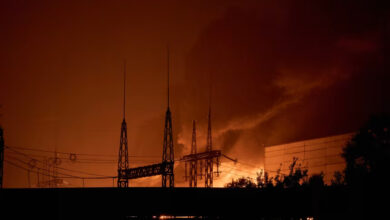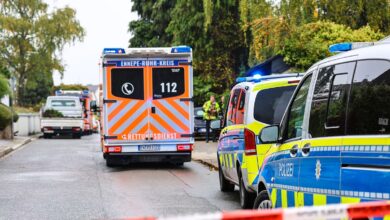
Russia moved to ease a nationwide coronavirus lockdown on Tuesday despite a surge in cases that has seen it register one of the world’s highest number of infections.
With pressure building to get the economy moving again, President Vladimir Putin on Monday announced an end to a national “non-working” period in place since late March.
Containment measures remained in many parts of the vast country, including hard-hit Moscow which is on lockdown until the end of May, but others began to lift some restrictions.
In Bashkortostan in the Urals officials reopened parks and river banks and in Magadan in the Far East residents were allowed to leave their homes to exercise.
In Moscow some half-a-million construction and industrial workers were allowed back on the job, as wearing masks and gloves became mandatory in shops and on public transport.
Riding a bus in the capital, 25-year-old Tatyana Khan said it was clear why such measures were necessary.
“If everyone had worn masks earlier there probably would be fewer infections in Russia,” said Khan, who has been working for the city disinfecting building entrances.
Russian health officials said Tuesday that another 10,899 cases were recorded in the last 24 hours, bringing the country’s total number of confirmed infections to 232,243.
After reporting more than 10,000 new cases per day for more than a week, Russia has moved into the top four countries in the number of infections and is on track to soon have the second most in the world after the United States.
But with only 2,116 virus deaths reported so far, Russia’s mortality rate has been much lower in comparison with the United States, Spain, Italy and other countries with similar infection rates.
– Economy must ‘return to normal’ –
Authorities say this is because Russia was able to learn lessons from the experiences of western Europe, moving quickly to isolate travellers and people at risk, convert hospitals to treating virus patients and launch a vast campaign to test and quarantine those infected.
Some 5.8 million tests have been carried out so far.
But critics have cast doubt on the numbers, accusing officials of under-counting by blaming virus-related deaths on other causes.
Putin pointed to the low mortality rate when he said it was time to lift the measure that ordered Russians in non-essential jobs to stay home.
The move brought uncertainty to an economy already grappling with low oil prices, with business owners struggling to pay full salaries to employees while shutting their doors to customers.
“It is in the interest of all of us for the economy to return to normal quickly,” Putin said, adding that the construction, agriculture and energy industries should be restarted first.
“The epidemic and associated restrictions have had a strong impact on the economy and hurt millions of our citizens.”
Putin has seen his approval ratings fall as Russians grow increasingly concerned about their economic futures.
The Kremlin has left it up to individual regions to decide how to proceed with easing restrictions and in Moscow residents will still only be allowed to leave their homes for brief trips or to travel to work with a permit.
Medical workers have warned that despite the increase in capacity, hospitals and clinics have been stretched in dealing with the crisis.
On Tuesday five people died in a hospital for coronavirus patients in Saint Petersburg including some attached to ventilators.
Saint Petersburg governor Alexander Beglov said it appeared that one of the ventilators at the Saint George hospital had short-circuited and caught fire.




